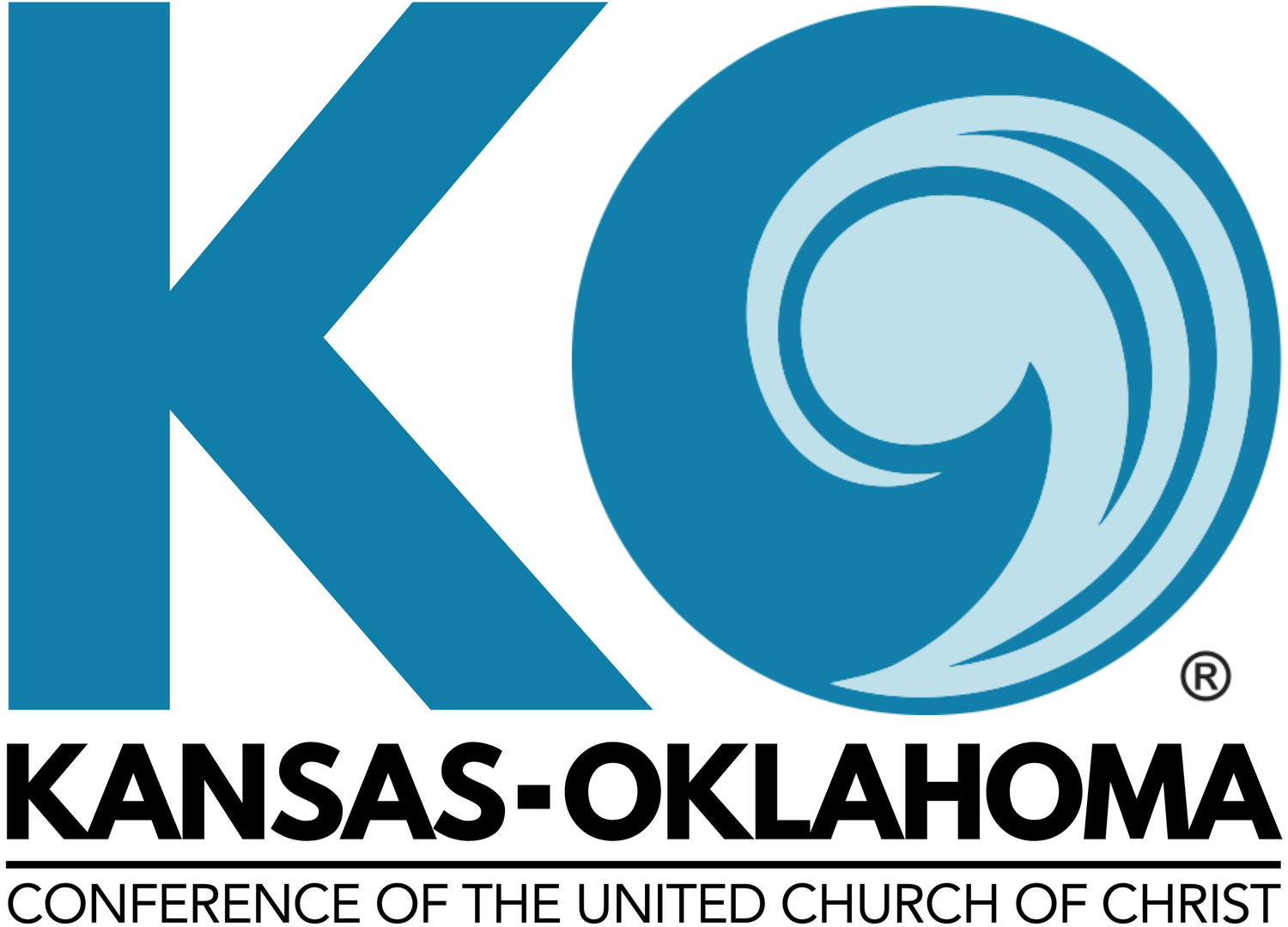Embodied: Women, History, and the Posture of Prayer
Rev. Dr. Lori Walke
Senior Minister, Mayflower Congregational UCC
Oklahoma City, Oklahoma
“…The power and the potency of these anonymous women figures standing in early Christian art let us glimpse the power and the potency of the earliest women in ministry; women who inspired generations of faithfulness…”
In ancient liturgical art (which could be the most boring way to begin a church article, but stay with me), on the walls of catacombs in Rome, on reliefs on sarcophagi, on the mosaics of holy places, even on jewelry and on household objects, there are hundreds, maybe even a thousand images of a praying figure: arms outstretched, palms open, head lifted. This praying person, called an ‘orans’ (Latin for – wait for it - ‘praying person’) shows up in both Christian and non-Christian art from the second to sixth centuries. This posture - arms-outstretched, palms open, and head lifted - is discussed even by the writers Cicero and Virgil. This is the proper way to pray.
In an article titled, The Early Christian Orans,[1] historian and scholar Karen Jo Torjesen notes that there is one distinguishing feature in this period that marks the figure as Christian: she is almost always female. Other details vary - sometimes she wears a veil, sometimes not; sometimes she is barefoot, other times she sports sandals; often she stands alone, but just as frequently, she is in a group of two or three other orans. She is also almost always anonymous. There is never a name next to her. But her femaleness serves as a sign that this was a Christian place. Non-Christian orans are overwhelmingly male.
This orans figure was the primary symbol of the early Church. She is everywhere in early Christian art, even more numerous than pictures of Jesus, who during that time was depicted as an shepherd boy with a beard not quite fully grown in. Christians were not yet using the Cross as an “x to mark the spot” for their gatherings. For early followers of The Way, these orantes (plural for orans) formed a crowd of anonymous women, praying over the living, praying over the dead, and praying over the community.
About the orans, Torjesen asks, “What was so potent about women’s praying or women’s prayers that generated the ubiquitous symbol of the orans? Why should the power, work, service, ministry, and authority of prayer be portrayed by a female figure?”
We know a few things about early Christianity that contribute to an explanation. In the second century, Christians were still gathering in house churches and celebrating together the common meal of the Eucharist - which was actually a meal, not a bite of bread and sip of wine. Women often presided in these churches and over these meals, even the grumpy Apostle Paul admits this. Furthermore, by the second century, we are already beginning to see distinct orders of ministry which women participated in - think deacons, elders, even bishop and priest. And finally, women in these churches, engaged in all kinds of liturgical activities.
“Liturgical activities” are those things relating to public worship. It includes praying, our catch-all word for speaking or saying words to God, blessing, and praising. It also includes prophesy, our catch-all word for teaching, or speaking under inspiration, warning, or correcting – which goes hand-in-hand with justice work.
It seems that women in the early church so regularly and passionately embodied prayer and prophecy that they inspired the church to designate the orans as female in the context of Christianity. The power and the potency of these anonymous women figures standing in early Christian art let us glimpse the power and the potency of the earliest women in ministry; women who inspired generations of faithfulness.
As we consider justice in the context of Women’s History Month, we pay particular attention to where women are thriving. As it turns out, it is not in our own backyard. According to one study that looked at everything from median earnings for female workers to women’s preventative health care to the female homicide rate, both Kansas and Oklahoma rank in the bottom half of 2021’s Best States for Women, at #36 and #47 respectively.[2] As we work for a world more closely aligned with God’s justice, the Church must organize and mobilize on issues that directly impact the quality of life for women and girls.
We also know that the Church has internal work to do to support and amplify women’s voices. The stained-glass ceiling is real: according to the 2020 UCC Statistical Profile, while women make up 52.5% of ordained ministers, they are underrepresented in senior/solo pastor positions, with 40.9% of senior/solo pastors identifying as female, and over-represented in associate pastor positions, with 66.7% of associate pastors identifying as female.[3] As the world celebrates women who are the first to serve in positions previously denied to them by institutional sexism (see: Vice President Kamala Harris), it is all too easy to see the Church still needs to kick ecclesiastical sexism to the curb.
Perhaps a good first step would be to reclaim the orans as the primary symbol for Christians and the Church – praying people with arms outstretched, palms open, and head lifted, ever ready to bless, prophecy, and act.
May it be so.
[1] Beverly Mayne Kienzle and Pamela J. Walker, eds., Women Preachers and Prophets through Two Millennia of Christianity (University of California Press, 1998).
[2] https://wallethub.com/edu/best-and-worst-states-for-women/10728


